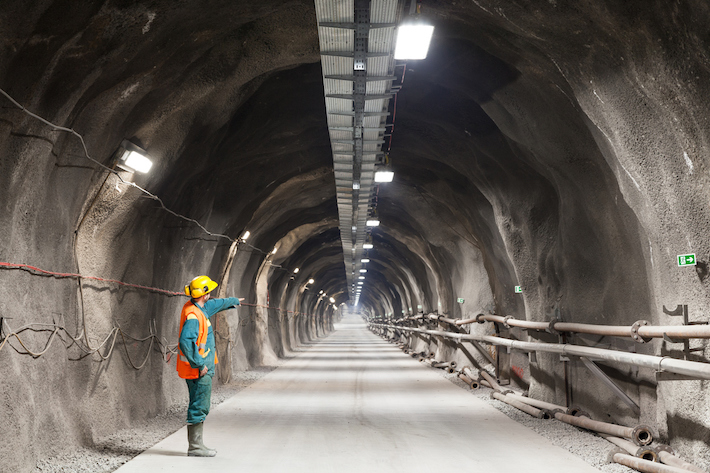 Underground tunnels are used for cars, rail and subways and to transport water, sewerage, oil and gas. Underground tunnels have changed the face of cities around the world and transformed the military and transport industries.
Underground tunnels are used for cars, rail and subways and to transport water, sewerage, oil and gas. Underground tunnels have changed the face of cities around the world and transformed the military and transport industries.
The 50 kilometre UK-France Channel Tunnel is one of the most famous but there are successful vehicle and rail tunnels in developed countries everywhere. The tunnels are engineering marvels.
Constructing Underground Tunnels
Tunnels are engineering marvels. The Channel Tunnel was listed as one of the ‘Seven Wonders of the Modern World’ according to the American Society of Civil Engineers.
Constructing a tunnel involves excavating thousands of tonnes of sand, rock or seabed and reinforcing the sides with steel and concrete. The methods of construction include hand excavation, the drill and blast method and a tunnel boring machine.
The chosen method will depend on the shape of the tunnel and conditions of the ground, but all will use alignment lasers.
The tunnelling construction methodology must include tunnel alignment to:
- Ensure the width and size of the road caters to all kinds of vehicles
- The tunnel’s alignment is consistent with the alignment of the leading roads
- Consideration of sight distances, minimum turning radius and design speeds
Alignment lasers are used to ensure the accuracy of all these requirements and to avoid delays and additional costs.
History of Alignment Lasers
When laser light beams were invented in 1958, they were described as ‘a solution looking for a problem.’ Now of course lasers are used for everything from scanning barcodes, playing DVD’s, cutting steel, fixing our eyes and measuring in a variety of industries.
The first laser levels were introduced in the 1970s. By the 1980s a patent was lodged for the spinning mirror design of a laser level. Today’s compact lens lasers were first used and patented in the 1990s.
How Alignment Lasers Have Improved
A laser produces a monochromatic light (often red or green) or an invisible colour (ultraviolet or infrared) and shoots a tight, narrow beam of light.
With research, field testing and experience lasers for underground tunnels have changed and improved over the years. Alignment lasers are so durable they can withstand the harshest environments. The lasers are built so tough they can survive nearby blasting, variations in temperature, dust and water.
Protected by thick-wall aluminium housing, they are dust and waterproof. Vacuum-filled with nitrogen avoids condensation on the optics. A piece of thick optical glass, which is easily replaced if damaged, protects the unit’s optics from blast damage. By ensuring the units can be quickly and easily dismounted, they can be removed for blasts.
With improvements in technology and regular calibration, modern units are incredibly accurate. Rather than rely on an operator to adjust the level of the unit, the laser dot can self-level and find its plumb position. The user no longer needs to worry about noting measurements by hand. The sensor head is so sophisticated it can memorise the data and dump it to the analyser later. The working range of units has improved over the years to several hundred metres. The units are more stable and can handle dirty power conditions.
What are the Different Types of Alignment Lasers?
With the right underground mining or underground laser tunnel, users can achieve exceptional results quickly and easily.
Two types of alignment lasers include the dual beam laser and long-range tunnel lasers.
Dual Beam Lasers
Dual beam lasers have two visible laser beams pointing in opposite directions. Marks on the side of a wall can ensure a long hole drill rig is in the correct position. They can align two points from the middle, and one beam can be used as a tacking point to extend the alignment accuracy.
A quality USA-made laser is the LTA Dual Beam Alignment Laser. As well as tunnelling, the laser is suitable for point to point referencing, industrial aiming, positioning and alignment, stays and shoring.
Long Range Tunnel Lasers
A long-range tunnel laser is suitable for vertical shafts of 600 metres. The AMA T8 Tunnel Alignment Laser is Swedish made and is an extremely accurate and reliable unit.
The fully focusable beam uses the smallest possible beam size, typically 35 mm at 600 metres. The self-levelling process works with a beam produced only when the laser is level.
Check out the GSR Laser Tools range of mining, tunnelling and industrial alignment lasers. If you have any questions, don’t hesitate to ask an expert by calling (08) 9409 4058 or contact us online.